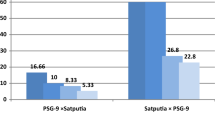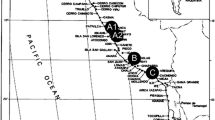Abstract
The genus Passiflora L. has about 80 species with edible fruits and desirable agronomic characteristics which can be transferred to commercial species for further breeding by artificial hybridization. The aim of this study is to determine the self-fertility (SF) and interspecific compatibility of six commercially cultivated species and six wild species as a resource for future breeding programs. Reciprocal interspecific pollinations were carried out involving twelve species for a total of 144 hybrids combinations. The test of SF showed that seven species display no more than 5 % of fruit set, indicating self-incompatibility (P. cincinnata, P. maliformis, P. caerulea, P. mucronata and P. vitifolia, P.alata and P. edulis f. flavicarpa). Percentage of formed fruits in a fruit set ranged from 2.1 to 60 % and results showed significant differences in the effectiveness of some species in crosses when acting as the female parent. The highest fruit set was obtained when the female parent was P. vitifolia, P. mucronata and P. edulis f. edulis and P. edulis f. flavicarpa ranging from 22.2 to 60 %. Regarding fruit production, 48.1 % of the successful crosses reached physiological maturity giving a total of 21 fruits with similar sizes and number of seeds, as compared to the ones obtained by natural pollination. Post-zygotic barriers were detected in 53.8 % of the crosses where a fruit was formed due to failure in seed endosperm development or low germination. The highest percentage of germination was obtained in crosses of P. mucronata × P. alata and P. edulis f. flavicarpa × P. vitifolia with 87.5 and 100 %, respectively. The finding of high compatibility of some hybrid combinations in this study is promising. However, the performance of F1 hybrids needs to be determined in field evaluations to assess the real potential for further breeding.

Similar content being viewed by others
References
Abrahamczyk S, Souto D, Renner SS (2014) Escape from extreme specialization: passionflowers, bats and the sword-billed hummingbird. Proc Biol Sci 281:1–7. doi:10.1098/rspb.2014.0888
Abreu PP, Souza MM, Santos EA, Pires MV, Pires MM, de Almeida AA (2009) Passion flowers hybrids and their use in the ornamental plant market: perspectives for sustainable development with emphasis on Brazil. Euphytica 166:307–315. doi:10.1007/s10681-008-9835-x
Akamine EK, Girolami G (1959) Pollination and fruit set in yellow passion fruit. Hawaii Agriculture Experimental Station, University of Hawaii, Technical Bulletin 39. Hawaii, U.S.A
Apple J, Feener D (2001) Ant visitation of extrafloral nectaries of Passiflora: the effects of nectary attributes and ant behavior on patterns in facultative ant-plant mutualisms. Oecologia 127(3):409–416. doi:10.1007/s004420000605
Arias JC, Ocampo J, Urrea R (2014) La polinización natural en el maracuyá (Passiflora edulis f. flavicarpa Degener) como un servicio reproductivo y ecosistémico. Rev Agron Meso 25(1):73–83. doi:10.15517/am.v25i1.14200
Beal PR (1972) Two new interspecific hybrids in the genus Passiflora. Sabrao Newsl 4(2):113–115
Beal PR (1975) Hybridization of Passiflora edulis Sims and P. edulis Sims f. flavicarpa Degener. Queensl J Agric Anim Sci 32(1):101–111
Brandvain Y, Haig D (2005) Divergent mating systems and parental conflict as a barrier to hybridization in flowering plants. Am Nat 166(3):330–338. doi:10.1086/432036
Brennan AC, Hiscock SJ (2009) Expression and inheritance of sporophytic self–incompatibility in synthetic allohexaploid Senecio cambrensis (Asteraceae). New Phytol 186(1):251–261. doi:10.1111/j.1469-8137.2009.03082.x
Bruckner CH, Otoni WC (1999) Hibridação em maracujá. In: Borém A (ed) Hibridação artificial de plantas. UFV, Viçosa, pp 379–399
Bruckner CH, Casali VWD, Moraes CF, Regazzi AJ, Silva EAM (1995) Self-incompatibility in passion fruit (Passiflora edulis Sims). Acta Hortic 370:45–57. doi:10.17660/ActaHortic.370.7
Büchert A, Mogens J (2001) The fragility of extreme specialization: Passiflora mixta and its pollinating hummingbird Ensifera ensifera. J Trop Ecol 17:323–329
Bugallo V, Cardone S, Pannunzio M, Facciuto G (2011) Breeding advances in Passiflora spp. (Passionflower) native to Argentina. Floric Ornam Biotech 5(1):23–34. http://www.globalsciencebooks.info/JournalsSup/images/Sample/FOB_5%281%2923-34o.pdf
Cerqueira-Silva CB, Onildo NJ, Santos ESL, Corrêa RX, Souza AP (2014) Genetic breeding and diversity of the genus Passiflora: progress and perspectives in molecular and genetic studies. Int J Mol Sci 15:1422–1452. doi:10.3390/ijms150814122
Conceicão L, Souza MM, Belo GO, Santos SF, Freitas J (2011) Hybridization among wild passionflower species. Rev Bras Bot 34(2):237–240. doi:10.1590/S0100-84042011000200011
Coppens d’Eeckenbrugge G (2003) Exploração da diversidade genética das passifloras. In: Sexto Simpósio Brasileiro sobre a Cultura do Maracujazeiro. 24–27 Nov 2003, Campos de Goytacazes, Brasil, pp 1–24. http://cirad.academia.edu/GeoCoppensdEeckenbrugge/Papers
Darwin C (1875) On the good effects of crossing, and the evil effects of close interbreeding. In: Murray J, Street A (eds) Variation of animals and plants under domestication, Volume II. London, pp 92–116. http://darwin-online.org.uk/EditorialIntroductions/Freeman_VariationunderDomestication.html
Darwin, C (1876) The effects of cross and self fertilisation in the vegetable Kingdom. John Murray, London. http://darwin-online.org.uk/converted/pdf/1876_Fertilisation_F1249.pdf
De Melo F, Cervi A, Guerra M (2001) Karyology and cytotaxonomy of the genus Passiflora L. (Passifloraceae). Plant Syst Evol 226:69–84. doi:10.1007/s006060170074
Debouck DG, Libreros D (1995) Neotropical montane forests: A fragile home of genetic resources of wild relatives of New World crops. In: Churchill SP, Balslev H, Forero E, Luteyn JL (eds). Biodiversity and conservation of neotropical montane forests, proceedings of a symposium, New York Botanical Garden, 21–26 June 1993, pp 561–577
Dickinson HG (1995) Dry stigmas, water and self-incompatibility in Brassica. Sex Plant Reprod 8:1–10. doi:10.1007/BF00228756
Escobar LK (1981) Experimentos preliminares en la hibridación de especies comestibles de Passiflora. Actual Biol. 10(38):103–111. http://matematicas.udea.edu.co/~actubiol/actualidadesbiologicas/raba1981v10n38art1.pdf
Escobar LK (1985) Biología reproductiva de Passiflora manicata e hibridación con la curuba, Passiflora mollisima (H.B.K) Bailey. Actual. Biol. 14(54):111–121. http://matematicas.udea.edu.co/~actubiol/actualidadesbiologicas/raba1985v14n54art1.pdf
Feuillet C, MacDougal JM (2003) A new infrageneric classification of Passiflora L. (Passifloraceae). Passiflora 13(2):34–38
Fischer R (2004) Hybrids and hybridization. In: Ulmer T, MacDougal JM (eds) Passiflora: passion flowers of the world. Timber Press Portland, Oregon, pp 362–376
Fuhrmann E (2011) Reacao de hibridos interespecificos de maracujazeiro a bacteriose e características físico-químicas de frutos. Dissertation, Mestrado em Agronomia. Faculdade de Agronomia e Veterinaria, Universidade de Brasilia, Brasilia, Universidade de Brasilia
Gilbert LE (1982) The evolution of a butterfly and a vine, Heliconius butterflies. Sci Am 247:110–121
Hajjar R, Hodgkin T (2007) The use of wild relatives in crop improvement: a survey of developments over the last 20 years. Euphytica 156:1–13. doi:10.1007/s10681-007-9363-0
Ho WF (1986) Shii CT (1986) Incompatibility system in passion fruit (Passiflora edulis Sims). Acta Hortic 194:31–38. doi:10.17660/ActaHortic.194.2
Junqueira NTV, Braga MF, Faleiro FG, Peixoto JR, Bernacci LC (2005) Potencial de especies silvestres de maracujazeiro como fonte de resistencia a doencas. In: Faleiro FG, Junqueira NTV, Braga MF (eds) Maracujá: germoplasma e melhoramento genetico. Embrapa Cerrados, Planaltina, pp 81–106
Kinoshita T (2007) Reproductive barriers and genomic imprinting in the endosperm of flowering plants. Genes Genet Syst 82:177–186. doi:10.1266/ggs.82.177
Kinoshita T, Ikeda Y, Ishikawa R (2008) Genomic imprinting: a balance between antagonistic roles of parental chromosomes. Semin Cell Dev Biol 19(6):574–579. doi:10.1016/j.semcdb.2008.07.018
Kishore K, Pathak KA, Shukla R, Bharali R (2010) Studies on floral biology of passion fruit (Passiflora spp.). Pak J Bot 42(1):21–29
Knight RJ (1972) The potential for Florida of hybrids between the purple and yellow passion fruit. Fl St Hortic Soc: 288–292. http://fshs.org/proceedings-o/1972-vol-85/288-292%20%28KNIGHT%29.pdf
Knight RJ (1991) Development of tetraploid hybrid passion fruit clones with potential for the north temperate zone. HortScience 26:1541–1543
Kugler E, Wetschnig W (1991) Bibliography and nomenclature of Passiflora violacea Loisel and P. amethystina J. C. Mikan (P. violacea Vell.). Linzer Biol Beitr 23:753–774. http://www.landesmuseum.at/pdf_frei_remote/LBB_0023_2_0753-0774.pdf
Madureira HC, Pereira TNS, Da Cunha M, Klein DE, de Oliveira MVV, de Mattos L, de Souza Filho GA (2014) Self-incompatibility in passion fruit: cellular responses in incompatible pollinations. Biologia 69(5):574–584. doi:10.2478/s11756-014-0353-0
Martin FW, Nakasone HY (1970) The edible species of Passiflora. Econ Bot 24(3):333–343
McClure BA, Cruz-García F, Beecher B, Sulaman W (2000) Factors affecting inter- and intra-specific pollen rejection in Nicotiana. Ann Bot 85(1):113–123
Nettancourt DD (2001) Incompatibility and incongruity in wild and cultivated plants. Springer, Berlin. doi: 10.1007/978-3-662-04502-2
Ocampo J, Coppens d’Eeckenbrugge G, Jarvis A (2010) Distribution of the genus Passiflora L. diversity in Colombia and its potential as an indicator for biodiversity management in the coffee growing zone. Diversity 2:1158–1180. doi: 10.3390/d2111158
Pandey KK (1973) Phases in the S-gene expression, and S-allele interaction in the control of interspecific incompatibility. Heredity 31:381–400. doi:10.1038/hdy.1973.93
Payán FR, Martín FW (1975) Barriers to the hybridization of Passiflora species. Euphytica 24:709–716. doi:10.1007/BF00132909
Primot S, Coppens d’Eeckenbrugge G, Rioux V, Ocampo J, Garcin F (2005) Variación morfológica de tres especies de curubas (Passiflora tripartita var. mollissima, P. tarminiana y P. mixta) y sus híbridos en el Valle del Cauca (Colombia). Rev Bras Frutic 27(3):467–471
Ramírez W (2006) Hibridación interespecífica en Passiflora (Passifloracea), mediante polinización manual, y características florales para la polinización. Lankesteriana 6(3):123–131. doi:10.15517/lank.vi.7957
Rego MM, Bruckner CH, Da Silva EAM, Finger FL, Siqueira DL, Fernandes AA (1999) Self–incompatibility in passion fruit: evidence of two locus genetic control. Theor Appl Gene 98:564–568. doi:10.1007/s001220051105
Rego MM, Rego ER, Bruckner CH, Da Silva EAM, Finger FL, Pereira KJC (2000) Pollen tube behavior in passion fruit following compatible and incompatible crosses. Theor Appl Gene 101:685–689. doi:10.1007/s001220051531
Rendón JS, Ocampo J, Urrea R (2013) Estudio de la polinización y la biología floral en Passiflora edulis f. edulis Sims, como base para premejoramiento genético. Acta Agronómica 63(3): 232–241. http://www.scielo.org.co/pdf/acag/v62n3/v62n3a06.pdf
Ruberté-Torres R, Martín FW (1974) First generation hybrids of edible passion fruit species. Euphytica 23:61–70. doi:10.1007/BF00032742
Sabine J (1822) Account of a newly produced Hybrid Passiflora. Trans Hort Soc 4:258–268
SAS Institute Inc., SAS 9.1.3 (2000–2004) Help and documentation. SAS Institute Inc, Cary
Sazima M, Sazima I (1978) Bat pollination of the passion flower, Passiflora mucronata, in southeastern Brazil. Biotropica 10:100–109. doi:10.2307/2388012
Schöniger G (1986) La curuba: técnicas para el mejoramiento de su cultivo. Bogotá: Editora Guadalupe (ed)
Snow N, MacDougal JM (1993) New chromosome reports in Passiflora (Passifloraceae). Syst Bot 18(2):261–273. doi:10.2307/2419402
Souza MM, Pereira T, Dias A, Ribeiro B, Viana AP (2006) Structural, hystochemical and cytochemical characteristics of the stigma and style in Passiflora edulis f. flavicarpa (Passifloraceae). Braz Arch Biol Techn 49(1):93–98. doi:10.1590/S1516-89132006000100011
Suassuna TMF, Bruckner CH, Carvalho CR, Borém A (2003) Self-incompatibility in passionfruit: evidence of gametophytic-sporophytic control. Theor Appl Gene 106:298–302. doi:10.1007/s00122-002-1103-1
Takayama S, Isogai A (2005) Self-incompatibility in plants. Annu Rev Plant Biol 56:467–489. doi:10.1146/annurev.arplant.56.032604.144249
Ulmer T, MacDougal JM (2004) Passiflora: passion flowers of the world. Timber Press Portland, Oregon
van Tuyl JM, De Jeu MJ (1997) Methods for overcoming interspecific crossing barriers. In: Sawhney VK, Shivanna KR (eds) Pollen biotechnology for crop production and improvement. Cambridge University Press, New York
Yockteng R, Coppens d’Eeckenbrugge G, Souza-Chies T (2011) Passiflora. In: Kole Chittaranjan (ed) Wild crop relatives: genomic and breeding resources tropical and subtropical fruits. Springer, Berlin and Heidelberg
Yotoko KS, Dornelas MC, Togni PD, Salzano TC, Bonatto SL, Freitas LB (2014) Does variation in genome sizes reflect adaptive or neutral processes? New Clues from Passiflora. Plos One 6(3):1–8. doi:10.1371/journal.pone.0018212
Acknowledgments
The authors are grateful to the Ministry of Agriculture and Rural Development of the Republic of Colombia for their financial support through the collaborative project “Aprovechamiento de la diversidad del maracuyá amarillo (P. edulis f. flavicarpa Degener), la gulupa (P. edulis f. edulis Sims) y la granadilla (P. ligularis Juss.) para mejorar y diversificar los sistemas de producción en Colombia 074-2008L6772-3447”. We are indebted also to Dr. John Miles of the International Center for Tropical Agriculture (CIAT) and the biologist Karen Amaya Vecht for their contributions in improving this manuscript.
Author information
Authors and Affiliations
Corresponding author
Rights and permissions
About this article
Cite this article
Ocampo, J., Arias, J.C. & Urrea, R. Interspecific hybridization between cultivated and wild species of genus Passiflora L.. Euphytica 209, 395–408 (2016). https://doi.org/10.1007/s10681-016-1647-9
Received:
Accepted:
Published:
Issue Date:
DOI: https://doi.org/10.1007/s10681-016-1647-9




